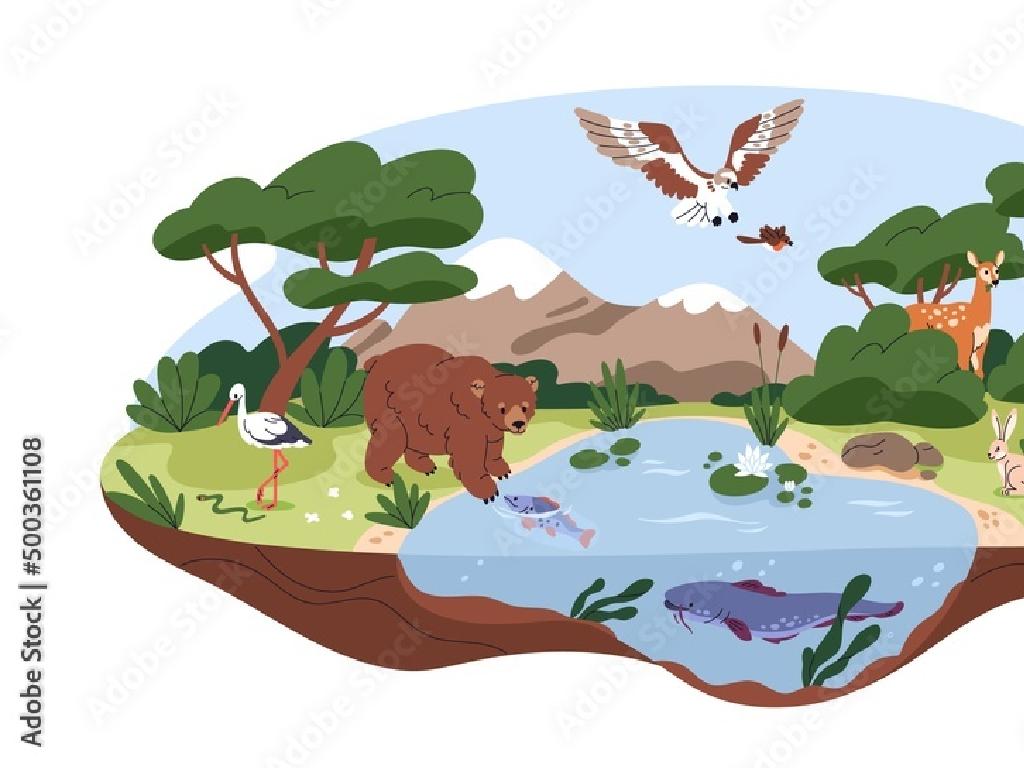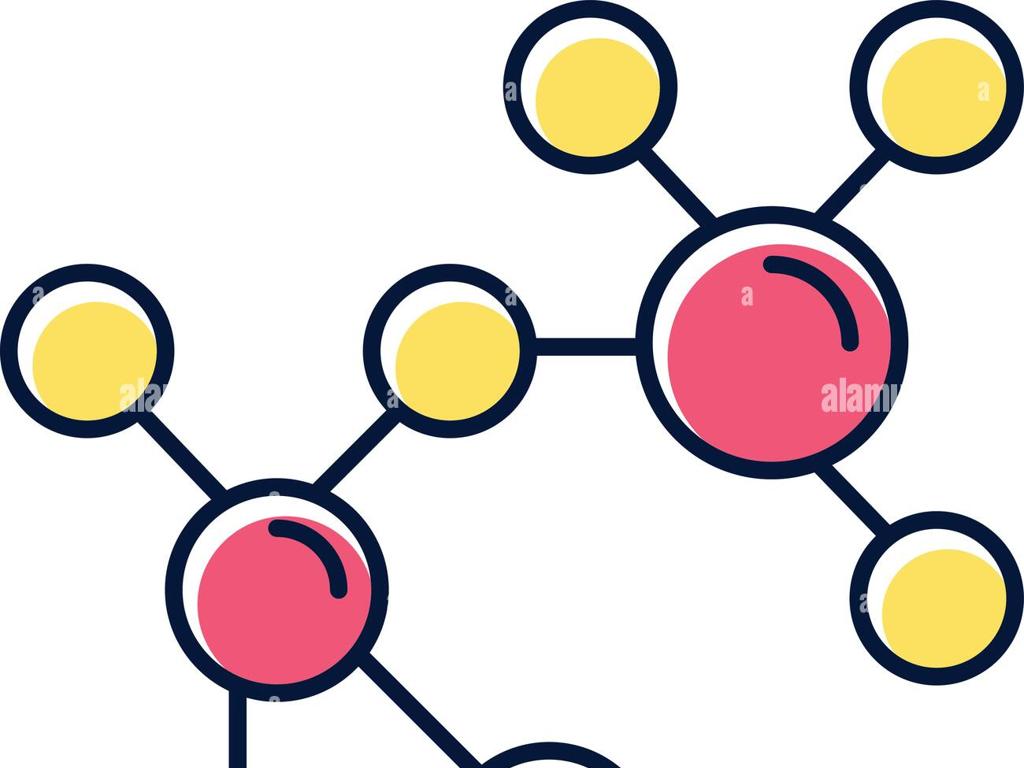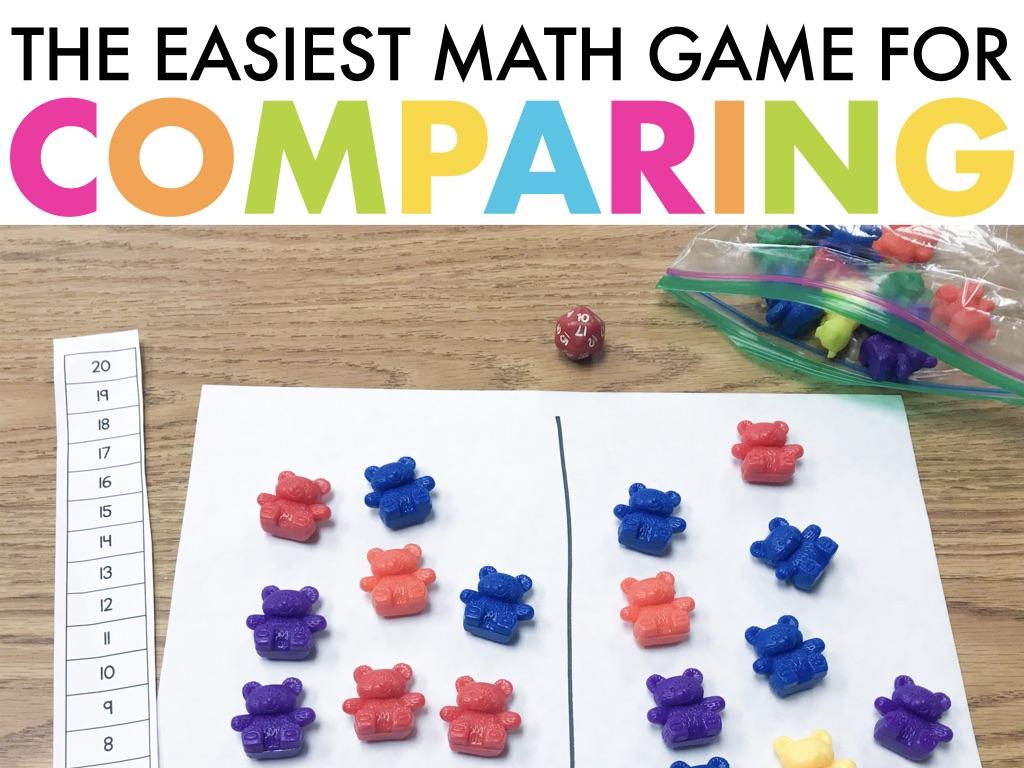Inside And Outside
Subject: Math
Grade: Kindergarten
Topic: Positions
Please LOG IN to download the presentation. Access is available to registered users only.
View More Content
Exploring Inside and Outside
– Learn about Inside and Outside
– Understanding positions is fun
– Exploring with examples
– For example, a cup in a cupboard is inside, a ball in the yard is outside
– Activity: Find Inside and Outside
– We’ll find objects and decide if they’re inside or outside
|
This slide introduces the concepts of ‘Inside’ and ‘Outside’ to Kindergarten students, making them aware of positions and where things can be located. The goal is to make learning about positions interactive and enjoyable. Use everyday examples to illustrate the concept, such as toys in a toy box (inside) or a car in a parking lot (outside). Engage the students with an activity where they identify whether objects in the classroom or pictures are inside or outside. This hands-on approach helps solidify their understanding of the concepts in a playful and memorable way.
Learning About Positions: Inside & Outside
– Positions show locations
– Things can be above, below, and more
– Focus on ‘Inside’ and ‘Outside’
– ‘Inside’ means within something, ‘Outside’ means not within it
– Class activity: Find ‘Inside’ and ‘Outside’
– Use classroom objects to demonstrate
|
This slide introduces the concept of positions to Kindergarten students, helping them understand where things can be located in relation to other objects. Positions are an important part of spatial awareness and are used to describe locations such as above, below, beside, in front of, or behind. Today’s focus is on understanding the concepts of ‘Inside’ and ‘Outside’. For the class activity, have students identify objects that are inside something, like a toy inside a box, and objects that are outside. Encourage them to use their classroom environment to find examples. Possible activities include placing items inside or outside of a hoop on the floor, sorting pictures of items that are inside or outside, and even a game of Simon Says with inside/outside commands.
Understanding Inside and Outside
– ‘Inside’ means surrounded by something
– Imagine a toy inside a toy box
– A toy is ‘inside’ when it’s in the box, not outside it
– What things can be ‘inside’?
– Can you think of other things that are ‘inside’?
– Let’s find examples together!
– We’ll look around the classroom for ‘inside’ examples
|
This slide introduces the concept of ‘inside’ to Kindergarten students. Start by explaining that when something is ‘inside,’ it is completely surrounded by something else, like how a toy is surrounded by the walls of a toy box. Use a physical toy and a box in the classroom to demonstrate this concept. Encourage the children to think of and share examples of items that are ‘inside’ of other items. This could include things like crayons inside a crayon box or blocks inside a bin. As you discuss, walk around the classroom and point out items that are ‘inside.’ This will help students understand the concept in a tangible way and relate it to their everyday surroundings.
Understanding ‘Outside’
– ‘Outside’ means not inside
– Example: Toy next to the box
– A toy isn’t in the box, it’s beside it
– Let’s find things that are outside
– Look around the room for examples
– Discuss why they are ‘outside’
– Explain why something is not ‘inside’
|
This slide introduces the concept of ‘outside’ to Kindergarten students. Start by explaining that ‘outside’ means not being surrounded by something else, like when a toy is not in the toy box but next to it. Encourage the children to look around their own environment for things that are outside. For example, a ball lying on the grass is outside because it’s not in a container or a building. Have the students name objects they think are outside and discuss why they are considered ‘outside’. This will help them understand the concept of ‘inside’ and ‘outside’ in relation to objects and their positions.
Let’s Practice: Inside or Outside?
– Look at pictures to identify position
– Is the apple inside or outside?
– Is the apple in the basket or not?
– Is the dog inside or outside?
– Is the dog in the doghouse or not?
– Share your answers with the class
|
This slide is for a class activity to help Kindergarten students understand the concept of ‘inside’ and ‘outside’ as positions. Display pictures that clearly show objects either inside or outside of another object. For example, an apple in a basket or on the ground next to it, and a dog in a doghouse or standing outside of it. Ask the students to observe and decide if the objects are inside or outside. Encourage them to explain their reasoning. Possible activities include having different pictures for each student, using real objects in the classroom, or even having students act out scenarios of being inside or outside of a designated area. This will help reinforce the concept through visual learning and active participation.
Your Turn: Inside or Outside Game
– Let’s play a fun game together
– I’ll name a place for you
– Show me ‘inside’ or ‘outside’
– For example, if I say ‘house’, show ‘inside’ by stepping into a circle.
– Are you ready to start?
|
This interactive game is designed to help Kindergarten students understand the concept of ‘inside’ and ‘outside’ in a fun and engaging way. As the teacher, you will call out different places, and the students will demonstrate their understanding by positioning themselves to show if the place is ‘inside’ or ‘outside’. Before starting, ensure that the students have a clear space to move around safely. You can use props like a hula hoop or a drawn circle on the ground to represent ‘inside’. Encourage the students to think quickly and make it a lively activity. Possible places to call out include ‘school’, ‘playground’, ‘car’, ‘store’, and ‘bedroom’. Observe the students’ responses and offer positive reinforcement throughout the game.
Class Activity: Inside and Outside Hunt
– Let’s go on a hunt in our classroom!
– Find an item inside something
– Maybe a pencil inside a cup or box
– Find an item outside something
– Perhaps a book outside the bookshelf
– Share what you found with the class
|
This activity is designed to help Kindergarten students understand the concepts of ‘inside’ and ‘outside’ in a fun and interactive way. Before starting, explain what ‘inside’ and ‘outside’ mean with simple examples. During the hunt, guide the students to look for items and determine if they are inside or outside other objects. Encourage them to think creatively and ensure they understand why the item is considered inside or outside. After the hunt, facilitate a show and tell, allowing each student to explain their findings. This will reinforce their understanding and allow them to practice using the terms ‘inside’ and ‘outside’. Possible variations of the activity could include finding multiple items, drawing items that are inside or outside, or even categorizing classroom objects based on their positions.
Great Job on Learning Positions!
– Understanding Inside and Outside
– You can now tell where things are: in a box or out of a box.
– Describing locations made easy
– Use words like ‘inside’ and ‘outside’ to describe places.
– Celebrate your hard work!
– Give yourself a big cheer for learning new concepts!
|
This slide is a conclusion to reinforce the concepts of ‘inside’ and ‘outside’ that the students have learned. It’s a celebration of their understanding and ability to describe the location of objects. Encourage the children to feel proud of their accomplishment. You can have them demonstrate their understanding with a quick activity, like placing an object inside or outside of a container and describing it. This will help solidify their grasp of the concept in a fun and interactive way.






